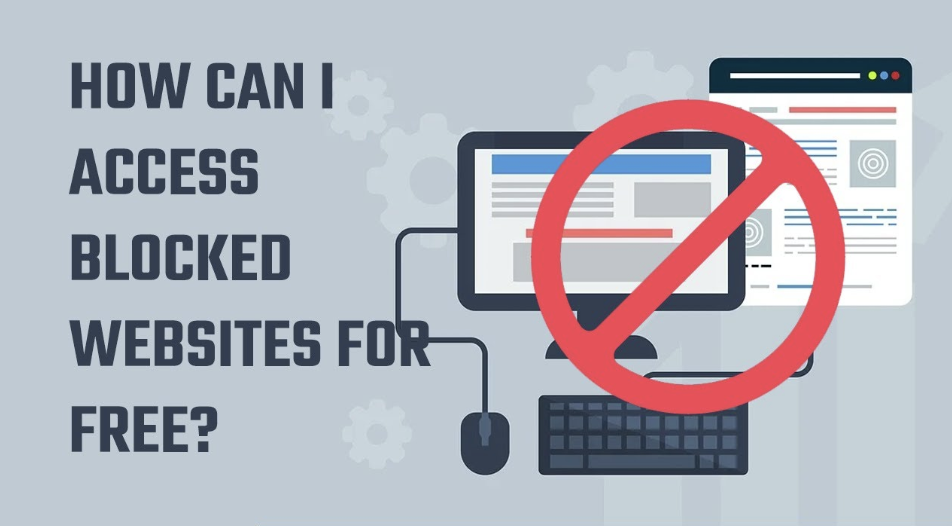Internet restrictions can be frustrating. Whether you’re trying to visit a plugin documentation page, connect to your WordPress dashboard abroad, or access helpful tools blocked by your ISP — those “This site can’t be reached” messages can stop productivity in its tracks.
But here’s the good news: removing ISP blocks and accessing restricted websites safely is completely possible. In this guide, we’ll show you how to do it step-by-step, with practical tips for WordPress users.
🌍 Why Websites Get Blocked by ISPs
Before we dive into solutions, it’s important to understand why websites are blocked in the first place.
1. Government or Legal Restrictions
Some regions enforce digital censorship laws that prevent access to specific websites. This includes political, streaming, or even open-source communities that are wrongly flagged as “unsafe.”
2. ISP Filtering
Your Internet Service Provider may filter or throttle certain connections based on content type, location, or bandwidth usage. For example, ISPs sometimes block sites hosting large downloads or international traffic.
3. Security or Malware Prevention
ISPs sometimes block sites automatically if their security systems detect malware or spam. This can even happen to legitimate WordPress sites if they’ve been compromised.
Tip: If your WordPress site gets blocked by mistake, always check your security setup. Tools like WP Captcha help prevent malicious bots that might trigger ISP filters.
🧭 Step 1: Verify That Your Website Is Actually Blocked
Before trying to bypass any block, confirm the issue.
✅ How to Test Website Access
Test Method |
Description |
Tool Example |
Browser Check |
Try accessing the site from multiple browsers |
Chrome, Firefox, Edge |
Mobile Network Test |
Switch from Wi-Fi to mobile data |
Test if ISP-based block exists |
Proxy or VPN Test |
Access the site through a virtual server |
FastVPN, NordVPN, ProtonVPN |
If the website opens when using a different network, your ISP is likely blocking it.
🧩 Check DNS Issues
Sometimes, it’s not a block but a DNS problem. Switch to a public DNS like Google DNS (8.8.8.8) or Cloudflare DNS (1.1.1.1).
This often fixes access issues immediately.
🔐 Step 2: Use a VPN (Virtual Private Network)
A VPN is the most common and secure way to bypass ISP blocks. It encrypts your connection and hides your IP address, letting you access restricted sites safely.
How a VPN Helps WordPress Users
- Access your site’s wp-admin area from anywhere.
- Protect login sessions on public Wi-Fi.
- Prevent data throttling or spying by ISPs.
Recommended VPNs for WordPress Users
- FastVPN – Fast, lightweight, and ideal for both beginners and professionals. It keeps your browsing secure and helps you remove ISP blocking and access restricted websites easily.
- ProtonVPN – Free plan with solid privacy options.
- ExpressVPN – Known for speed and reliability.
- NordVPN – Great for users focused on high-level encryption and security.
💡 Pro Tip: Always choose a VPN with a no-logs policy and servers in your preferred country. FastVPN is especially popular for its balance between simplicity and performance.
🌐 Step 3: Use a Proxy Server (Quick Alternative)
If you can’t install a VPN, proxies are a lightweight option. A proxy server acts as an intermediary between your browser and the website you’re visiting.
How to Use a Proxy
- Go to a trusted proxy site like Hide.me or KProxy.
- Enter the blocked site’s URL.
- Browse anonymously — no software installation needed.
While proxies are simple, they’re less secure than VPNs. Avoid logging into sensitive accounts through free proxies.
Proxy vs. VPN (Comparison Table)
| Feature | VPN | Proxy |
| Encryption | ✅ Yes | ❌ No |
| Speed | ⚡ Fast | ⚠️ Slower |
| Security | 🔒 High | 🕵️ Low |
| Cost | Usually Paid | Often Free |
🧱 Step 4: Bypass Blocks with Browser Extensions
Browser extensions are one of the quickest and easiest ways to get around ISP filters. They don’t require full installation like desktop VPNs — just add them to your browser, and you’re ready to go.
Why Browser Extensions Work So Well
Extensions route your web traffic through secure remote servers, allowing you to visit restricted sites without triggering ISP firewalls. They’re perfect if you just need temporary access or want to test different regions.
Popular VPN Browser Extensions
- FastVPN – Simple, fast, and highly reliable. FastVPN offers a smooth browsing experience right from your browser tab. It’s lightweight, protects your data, and helps you remove ISP blocking and access restricted websites easily.
- SetupVPN – A free Chrome and Firefox extension with one-click activation.
- Urban VPN – A browser-only VPN that offers decent speed and multiple server locations.
- Touch VPN – Fast and straightforward, ideal for short browsing sessions or testing client sites.
Each of these tools can act as a vpn chrome extension for secure browsing, keeping your data encrypted while letting you work freely on WordPress or browse blocked resources.
💡 Quick Tip: Extensions are best for short-term use. For long-term privacy or WordPress admin work, use a full VPN client like FastVPN instead.
⚙️ Step 5: Modify Your WordPress Site’s Access Settings
Sometimes, the problem isn’t with your ISP — it’s with your own site’s configuration.
1. Update .htaccess Rules
Incorrect .htaccess entries can block IP ranges unintentionally. Review your file using an FTP client and remove unnecessary “deny” directives.
2. Check Your Security Plugin
Plugins like Wordfence or iThemes Security can restrict admin access by country or IP. If you’re locked out, whitelist your IP temporarily.
3. Use Cloudflare
Cloudflare’s CDN can make your site accessible globally, even if local ISPs block your origin server.
Enable “Always Online” mode to keep content visible even when your main server is unreachable.
🛠️ Step 6: Access Restricted Websites with Smart DNS
A Smart DNS reroutes only certain parts of your connection, making it faster than a VPN. It’s ideal for streaming or testing international WordPress setups.
Benefits
- Faster than VPNs.
- Works on all devices (PC, phone, router).
- Great for accessing geo-blocked content.
Popular options include SmartDNSProxy, Unlocator, and KeepSolid SmartDNS.
📡 Step 7: Use the Tor Browser for Complete Anonymity
If privacy is a top concern, use the Tor Browser. It connects through multiple encrypted nodes to mask your online identity.
Tor can be slower, but it’s unbeatable for bypassing strict firewalls or censorship.
⚠️ Note: Avoid using Tor for logging into WordPress admin or online banking. It’s best for reading content, not managing secure accounts.
🧩 Bonus Tip: Keep Your WordPress Site Unblockable
If your own WordPress site is being blocked by ISPs, here’s how to prevent it.
- Use HTTPS: Get an SSL certificate to ensure secure access.
- Scan for Malware: Use security plugins like WP Captcha or Wordfence.
- Avoid Spammy Backlinks: These can trigger ISP filters.
- Host with Reputable Providers: Choose hosts with global CDNs and good IP reputations.
📊 Quick Recap: Best Methods to Access Blocked Websites
| Method | Security Level | Speed | Ease of Use |
| VPN | 🔒 High | ⚡ Fast | ⭐⭐⭐⭐ |
| Proxy | 🕵️ Low | ⚠️ Medium | ⭐⭐⭐ |
| Smart DNS | 🔑 Medium | ⚡ Very Fast | ⭐⭐⭐⭐ |
| Tor | 🔒 Very High | 🐢 Slow | ⭐⭐ |
| Cloudflare | 🔐 High | ⚡ Fast | ⭐⭐⭐⭐ |
🧠 Final Thoughts
ISP restrictions shouldn’t stop you from managing your WordPress sites or accessing useful online tools. Whether you use a VPN, proxy, or Smart DNS, you now have several reliable options to restore full internet freedom.
Keeping your WordPress secure and accessible goes hand in hand — tools like WP Captcha ensure your website stays protected while you stay connected.
 logo
logo



